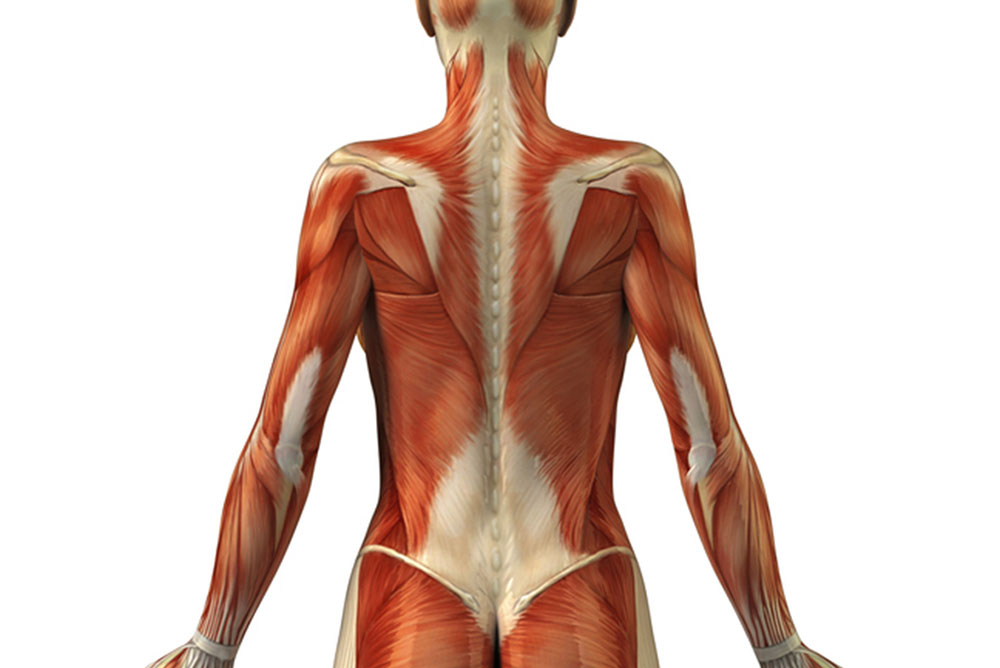
iStock
PITTSBURGH RETIRED journalist C.S. suffered back pain (following two surgeries to deal with a benign tumor) that made it impossible for her to sit for longer than 20 minutes at a time—and once forced her to lie down flat on the floor in the middle of TJMaxx.
After treatments ranging from traditional physical therapy (PT) to acupuncture, she discovered Myofascial Release (MFR) therapy, which practitioners and patients alike view as an exciting new tool for relieving pain.
Fascia—connective tissue composed of collagen and elastin that forms a “body stocking,” continuous layers of webbing, that envelopes and connects muscles, tendons, ligaments and bones—may play a crucial role in strength and coordination.
Myofascial pain has two sources: skeletal muscles or connective tissues that are ‘”bound down” by tight fascia; and damaged myofascial tissue itself, sometimes at a trigger point where a contraction of muscle fibers has occurred, according to Spinehealth.
The restriction or contraction can inhibit blood flow to the affected structures and heighten sensations of pain.
“Myofascial release means different things to different people,” Virginia Commonwealth University’s sports medicine program director Garry Ho told US News. “But it usually involves applying pressure…to tight muscles and fascia in an effort to get them to ‘release’ and alleviate pain.”
Since the first Fascia Research Congress held at Harvard Medical School in 2007, fascia has been referred to as the Cinderella Story of the anatomy world, according to Runners World: “a major player in every movement and every injury,” that no one paid attention to until recently.
On the other hand, “none of that research is clearly relevant to therapy,” writes editor and former massage therapist Paul Ingraham on PainScience. “Many therapists fascinated by fascia are reaching beyond—way beyond—what the science can actually support.”
“There are lots of theories as to why it works and how it works, but the research is still really murky,” said Ho, noting that most studies on MFR to date have been rejected by reviewers for poor quality and/or bias. A significant problem is the differences among individuals, both in the therapeutic practice of MFR and in the nature of each patient’s pain.
C.S.’s myofascial PT places her hands on various body parts including the back and applies gentle pressure for 10 minutes or so. The therapist also recommends using balls—tennis balls, lacrosse balls and softer balls—that C.S. keeps in her bed to put pressure on areas that become painful.
At the same time, as a complementary therapy, C.S. visits a myofascial masseuse who “uses more motion, gentle as well, but she stretches the fascia with her hands,” C.S. said. Both are “so different from classic PT, and from trigger-point massage that can often be painful.”
But the terminology and practice of each method can vary with individual practitioners. For some, MFR therapy may also be referred to as “myofascial trigger-point therapy.”
And a medical center site compares MFR therapy using sustained, gentle pressure to lengthen connective tissue, without lotions or oils to Swedish massage and deep-tissue massage, which rely on lubricants to prevent friction while kneading and stroking the muscles.
For most of the 400 years since fascia first appeared in anatomy textbooks, surgeons considered it mere packing material to be cut aside before working on the body. In the early 20th century, Ida Rolf’s discoveries that the tissue can become bunched or tangled, or even wrapped the wrong way around organs like the colon, led her to create a method of body manipulation that focused on fascia.
And fascia has long been an important focus of osteopathic medicine.
“As a holistic treatment that looks at the body as an integrated whole, [myofascial release] roots go back a long way, to the soft-tissue manipulations and stretches of osteopathy, which was first done in the nineteenth century.”
While many kinds of professionals—from rolfers and osteopaths to sports medicine doctors—practice MFR, Ho recommends beginning “the cheap way—yourself with tools,” which include foam rollers, a massage cane and massage blocks.
On the other hand, many share the belief that MFR can help people manage pain “mostly because it can help them relax…and there’s a physiological and neurological response to that,” said New York City massage therapist Beret Birkeby.
For C.S., the combination she has put together—MFR therapy and massage, along with her traditional, albeit painful PT—allows her to sit pain-free for long periods and otherwise to regain a “normal” quality of life.”
“Honestly, I think everything has helped, including traditional PT and acupuncture,” she said. “Or maybe nothing helped and the body is just healing on its own time”—exactly why myofascial therapy is so difficult to study but may still be a life-saving answer to pain for many sufferers.
—Mary Carpenter
Well-Being Editor Mary Carpenter reports on news you can use right here every Tuesday.

I experienced “frozen shoulder,” also known as adhesive capsulitis, which is very painful and can last several months. According to the Mayo Clinic website, “The bones, ligaments and tendons that make up your shoulder joint are encased in a capsule of connective tissue. Frozen shoulder occurs when this capsule thickens and tightens around the shoulder joint, restricting its movement. ”
My doctor recommended a physical therapist, but I am not comfortable being touched so much as massage entails, so I tried an exercise tape by Miranda Esmond-White. Best exercise tapes ever, as she really understands damaged myofascial tissue. My frozen shoulder was completely healed in two weeks.
Don’t go for surgery without first trying everything else.
My fascia therapist, Rena Margolis of Cherry Hill NJ, has published her research for many years. She is phenomenal.